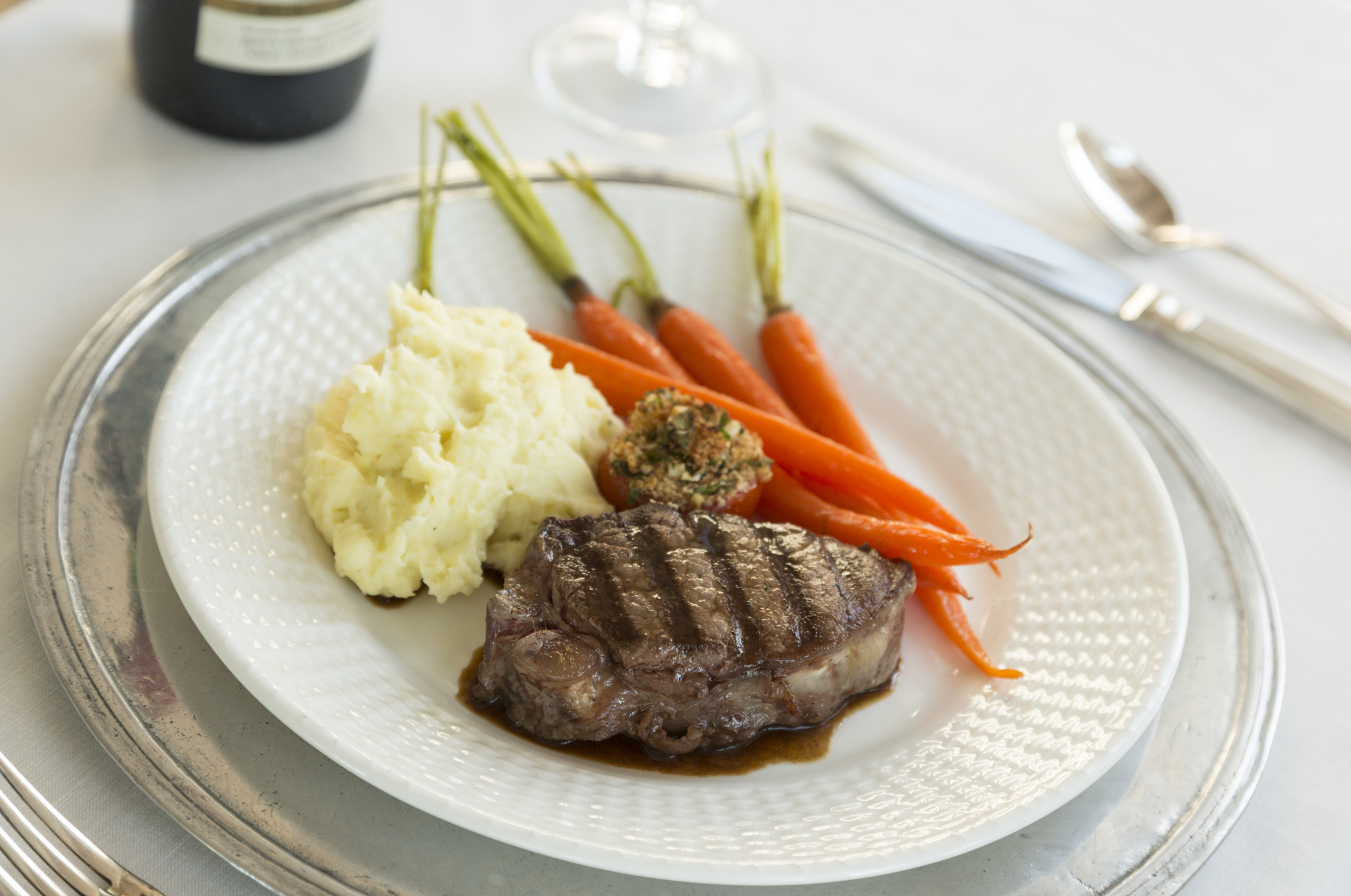
Summer is heating up, and so are the grills. Some of our favorite items to dig into include nice, juicy steak dishes. But with so many different types out there, how do you decide which one to eat? Get to know the most popular cuts (plus how best to enjoy them), so the next time you’re at the steakhouse, you can order exactly what you’re in the mood for.
What is steak?
Often grilled but sometimes pan-fried or even boiled, steak — or beefsteak to be specific — includes the more tender cuts from a cow’s loin and rib (filet mignon, strip, ribeye, porterhouse), as well as less tender cuts from the lower areas (skirt, hanger, flank) which are often served sliced. Steaks can be cooked using dry heat, moist heat or in sauce, mechanically tenderized (i.e. pounded) or minced and formed into patties like hamburgers.
What’s the difference between “prime” and “choice”?
Most often found on the menus of upscale steakhouses, USDA Prime steaks are the highest grade of meat. They are supremely tender, juicy and flavorful — a result of being cut from younger cows with the highest degree of fat marbling. USDA Choice is the second highest grade of beef. Choice cuts have less fat marbling compared to prime, and while still delicious, are coarser in texture. Available at either grade, below are several of the most popular types of steak.
Reserve: How to Skip the Kids’ Menu: 6 Tips Every Parent Should Know
Filet Mignon
Filet mignon, usually sliced thick, is a cut of beef taken from the smaller end of the tenderloin (the mid-upper back) that’s — you guessed it — very tender, perfect for those who like their steak on the rarer side. If you prefer your steak well done, ask for a filet that’s butterflied (cut almost in two and spread flat) so that it cooks through more.
Strip
The strip steak, a.k.a. The New York strip or sirloin, is a cut of beef from the short loin (upper back) of a cow. Though not as tender as a filet mignon, it’s a bit more marbled and a great option for grilling up from rare to medium.
Reserve: 4 Peachy Things You Didn’t Know About Stone Fruit
Porterhouse
A porterhouse — also known as a “T-bone” — is cut from the back of the cow and marbled with lots of flavor-boosting fat. Often described as “getting the best of both worlds,” since the filet is on one side and the strip on the other, the signature T-shaped bone adds even more depth of flavor.
Ribeye
Another strong choice for medium-rare lovers is the ribeye — a strip steak off the mid-area or a sirloin cut from the back — which is the most marbled cut (and extra delicious because of it).
Reserve: Summertime Staple: 5 Ways to Enjoy Corn
Hanger, Skirt & Flank
Cuts from the animal’s lower section, like hanger, skirt or flank steaks, tend to be thinner and less expensive, and thus well suited for dishes with other key elements. Hanger steak is very tender and a popular choice in dishes like steak frites (steak and fries).
Skirt and flank steaks are prized more for their flavor than for their tenderness, so they’re good choices for dishes like fajitas, bibimbap (Korean rice bowls) and Philly cheesesteaks.
From skirt steaks and choice ribeyes to prime porterhouses and filet mignon, there are endless ways to satisfy your carnivore craving. Check out 21 of the best cuts around.
Read the rest of this post over at Reserve. This article originally appeared on Reserve.
More Must-Reads from TIME
- Donald Trump Is TIME's 2024 Person of the Year
- Why We Chose Trump as Person of the Year
- Is Intermittent Fasting Good or Bad for You?
- The 100 Must-Read Books of 2024
- The 20 Best Christmas TV Episodes
- Column: If Optimism Feels Ridiculous Now, Try Hope
- The Future of Climate Action Is Trade Policy
- Merle Bombardieri Is Helping People Make the Baby Decision
Contact us at letters@time.com